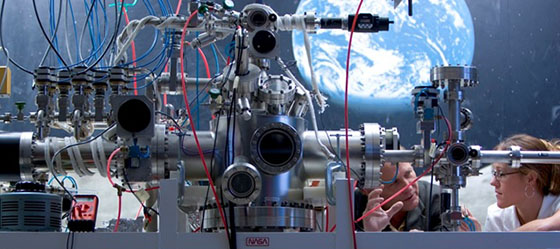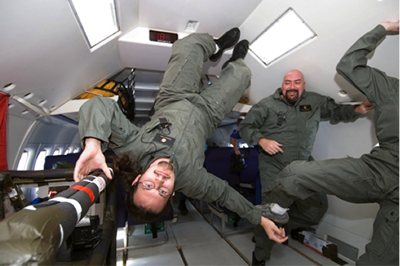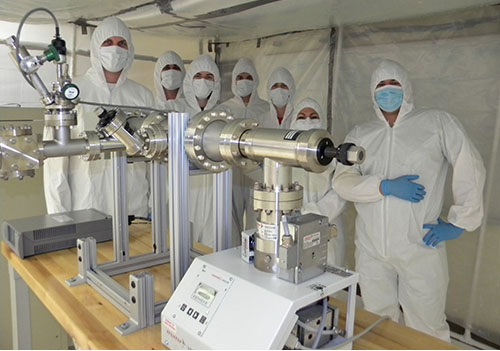Space at LU

History
Located 88 miles east of Houston’s Johnson Space Center, Lamar University faculty and students have had a long history of participation in NASA research and education projects. These projects, identified by NASA as important to its mission, have provided LU students the opportunity to work with faculty, Johnson Space Center and other aerospace mentors. LU students from a variety of disciplines have found employment at Johnson Space Center, with aerospace contractors surrounding the Center, or with other aerospace facilities found nationwide.
Lamar University became an inaugural member of the Texas Space Grant Consortium, which formed in 1989 as part of the National Space Grant Consortia funded by NASA. The Texas Space Grant Consortium is a group of 50 institutions which include universities, industrial organizations, non-profit organizations and government agencies within Texas. Through education and research the Consortium enables students in the participating universities to be inspired by and participate in NASA's mission of better understanding and protecting our planet, our mission is to improve life on earth, extend life beyond our planet and explore the universe.
NASA Reduced Gravity Education Flight Program

Ever wonder what it’s like to experience weightlessness?
The NASA Reduced Gravity Education Flight Program provides a unique academic experience for you to successfully propose, design, fabricate, fly and evaluate a reduced gravity experiment of your choice.
Lamar University students have participated nearly annually in NASA’s Reduced Gravity Education Flight Program since 1996. Students from a variety of disciplines have succeeded in winning 13 national proposal competitions to fly experiments of their own design aboard NASA’s reduced gravity aircraft. To date, the teams flew over 26 flights from the Ellington Field facility for a total distance of over 35,000 miles (10,000 miles greater than the circumference of the Earth) and a total time weightless of nearly 6 hours.
TSGC Design Challenge
Sponsored by NASA and administered by the Texas Space Grant Consortium, since Fall 2002, the TSGC Design Challenge is a unique academic experience offering you an opportunity to propose, design and fabricate a solution to a topic of importance to NASA and its mission.
Design Challenge topics are submitted by researchers working with NASA or its contractor community on current projects of interest. Student teams work on the topic of their choice over the course of one or two semesters. The overall experience pairs the student team and faculty advisor with a research-directed mentor; and provides student team members with an opportunity to engage in scientific research, hands-on design, space-related career opportunities, meeting presentation and educational outreach.
Lamar University engineering students have been regular participants in the TSGC Design Challenge since 2003. The most recent Design Challenge team won first place with its work on “Sanitizing Airlock for ISS".
→ Visit TSGC Design Challenge Website
Contact Us
Website: www.lamar.edu/engineering
Phone: 409-880-7870
Minor Program in Space Science

The Lamar University Department of Earth and Space Sciences in the College of Arts and Sciences offers a minor program in Space Science. The minor may complement a variety of majors in different disciplines. The minor requirements are met by completing a prescribed number of space science courses taught in the department. The course offerings such as Microgravity and Space Vacuum Physics provide opportunities for hands-on undergraduate research experiences mentored by aerospace professionals.